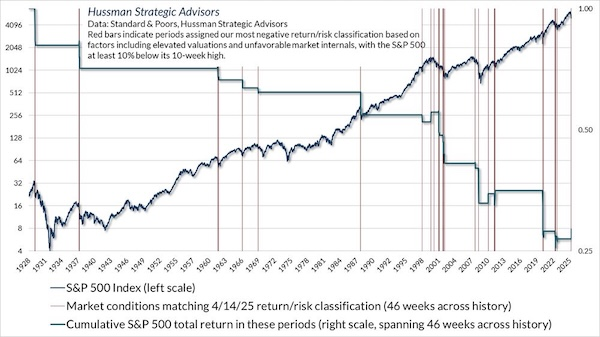Street Calls of the Week
Over the last 25 years, US companies have benefited from increasing globalization of both trade and capital, which enabled secular disinflation and increasing profitability.
As Goldman Sachs points out, “US equity valuations are difficult to sustain structurally if there is a trend towards higher inflation and lower corporate profitability,” as a result of a shift to deglobalization.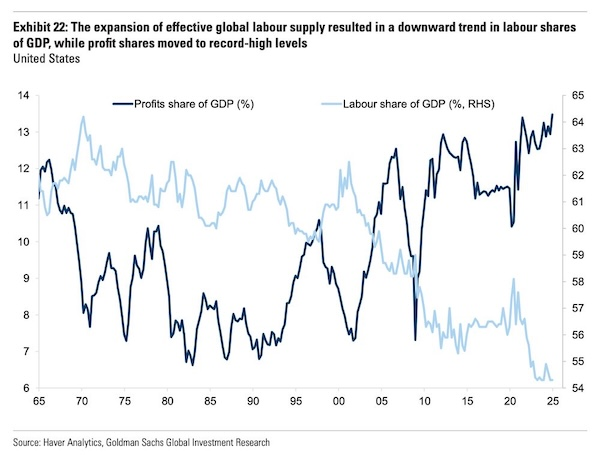
Recently, the trend toward deglobalization has been accelerated by a push to reinvent the global trading system on the part of the Trump administration. Markets are currently wrestling with two potential narratives for how this plays out. “Both scenarios end with a weaker dollar, but the second has received more attention of late as Treasury yields climbed while the dollar fell,” writes John Authers.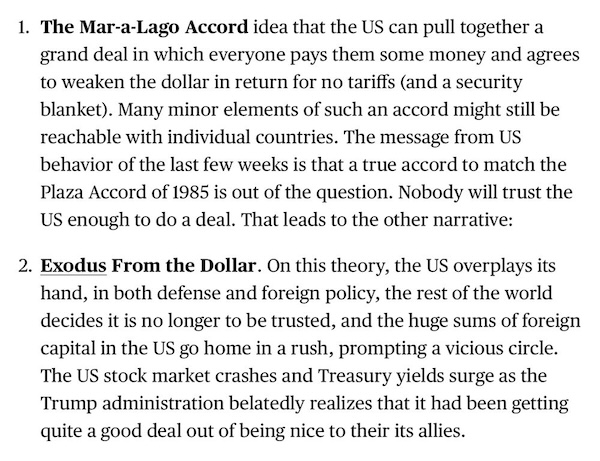
As The Financial Times reports, those highly unusual moves in the dollar and in the treasury market point to “good old capital flight.”
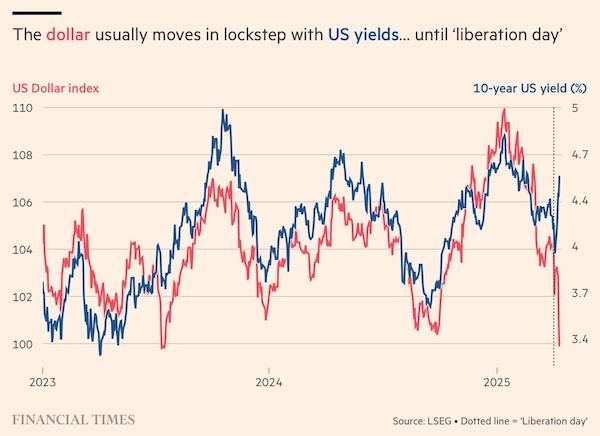
And it’s not just the bond market that is vulnerable to this dynamic. Stocks, too, may be a casualty of a larger decoupling of the world’s major powers. As James Aitken writes, “I am often asked ‘how is Europe going to fund the purchases of the ever increasing amount of bunds and joint-EU-bonds they are going to issue?’ The answer is staring us in the face: they will fund it out of the S&P 500.”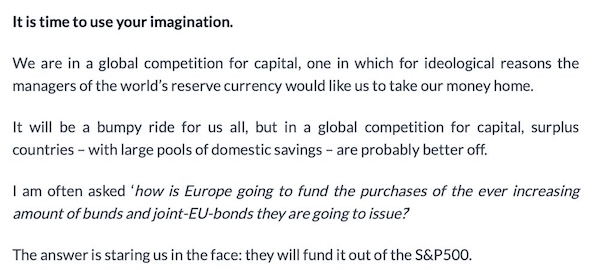
The action in the stock market may already be warning of the growing potential for such an outcome. “Current conditions are the closest thing we know to a crash warning. Not a ‘forecast’ – only the combination of our most negative market return/risk classification – based on factors including rich valuations and unfavorable market internals – plus an initial break of 10% from a 10-week high,” notes John Hussman.
